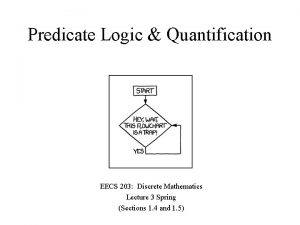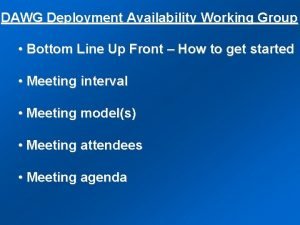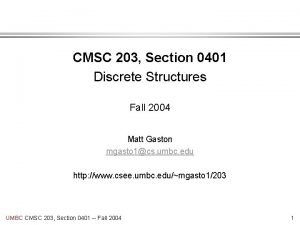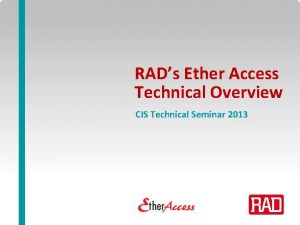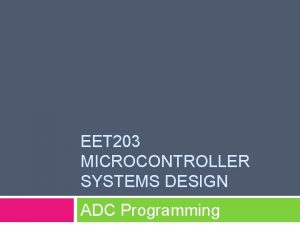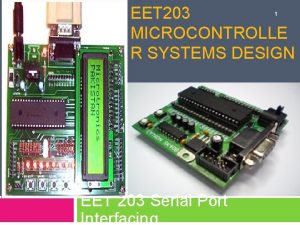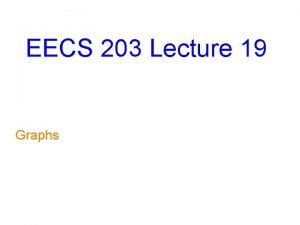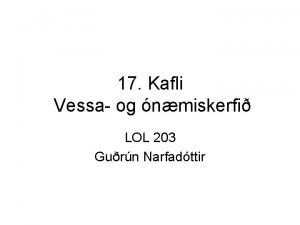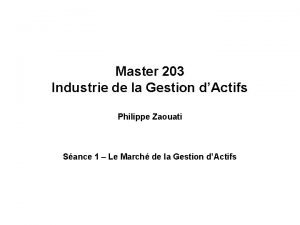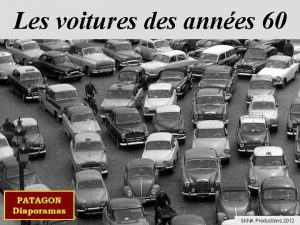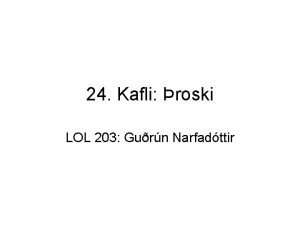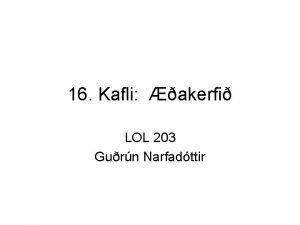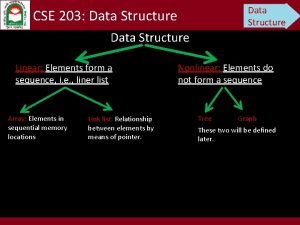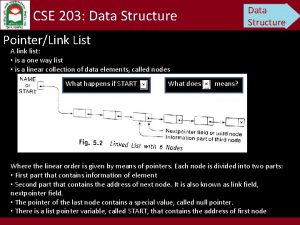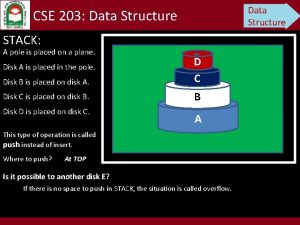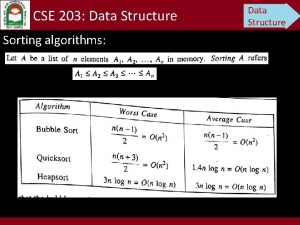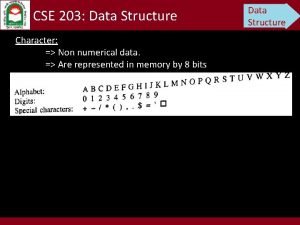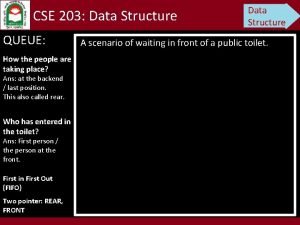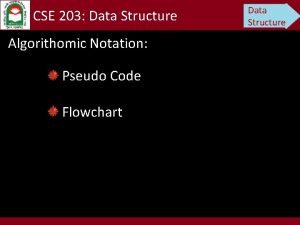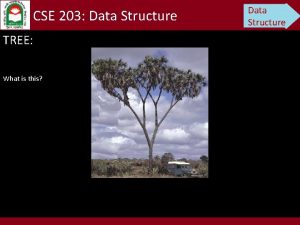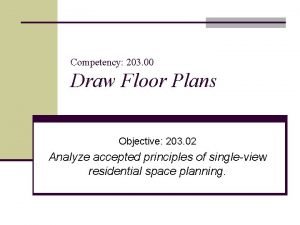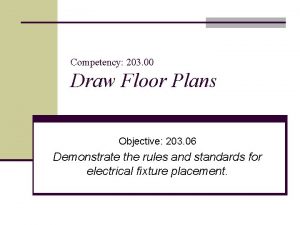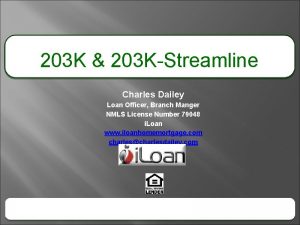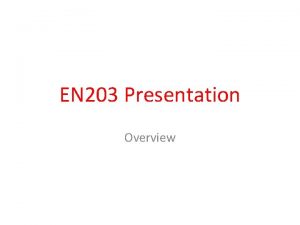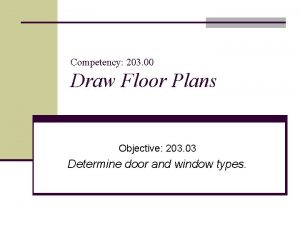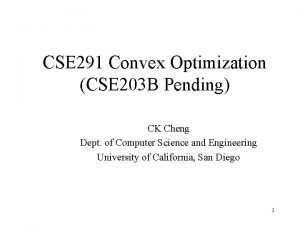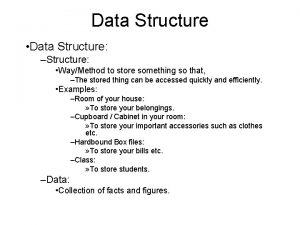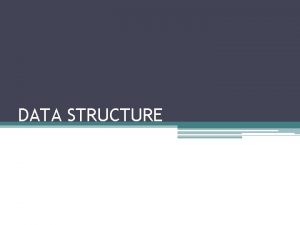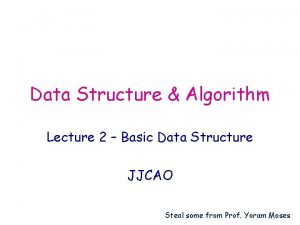CSE 203 Data Structure Lecture No 03 CSE






















- Slides: 22

CSE 203: Data Structure Lecture No. 03 CSE 203: Data Structures Dr. A. H. M. Kamal Basic

CSE 203: Data Structure Basic Data Structures Prepares the students for the more advanced material to which students will encounter in later courses. Cover well-known data structures such as dynamic arrays, linked lists, stacks, queues, tree and graphs. Implement data structures in C/C++

CSE 203: Data Structure Basic Organizing Data Structure is a systematic way to organize data in order to use it efficiently § Any organization for a collection of records that can be searched, processed in any order, or modified. § The choice of data structure and algorithm can make the difference between a program running in a few seconds or many days.

CSE 203: Data Structure Basic Organizing Data • Interface − Each data structure has an interface. Interface represents the set of operations that a data structure supports. An interface only provides the list of supported operations, type of parameters they can accept and return type of these operations. • Implementation − Implementation provides the internal representation of a data structure. Implementation also provides the definition of the algorithms used in the operations of the data structure.

CSE 203: Data Structure Basic Efficiency § A solution is said to be efficient if it solves the problem 1. within its resource constraints. - Space - Time 2. Correctly. § The cost of a solution is the amount of resources that the solution consumes.

CSE 203: Data Structure Basic Need for Data Structure 1. Applications are getting complex 2. Data are becoming rich 3. Demand for handling data by computer is increasing

CSE 203: Data Structure Basic Need for Data Structure There are three common problems that applications face now-a-days. • Data Search − Consider an inventory of 1 million items of a store. If the application is to search an item, it has to search an item in 1 million items every time slowing down the search. As data grows, search will become slower. • Processor speed − Processor speed although being very high, falls limited if the data grows to billion records. • Multiple requests − As thousands of users can search data simultaneously on a web server, even the fast server fails while searching the data.

CSE 203: Data Structure Basic Selecting a Data Structure Select a data structure as follows: 1. Analyze the problem to determine the resource constraints a solution must meet. 2. Determine the basic operations that must be supported. Quantify the resource constraints for each operation. 3. Select the data structure that best meets these requirements.

CSE 203: Data Structure Basic Some Questions to Ask Are all data inserted into the data structure at the beginning, or are insertions interspersed with other operations? Does the system allows any modification? Can data be deleted? Are all data processed in some well-defined order, or is random access allowed?

CSE 203: Data Structure Basic Goals of this Course 1. Reinforce the concept that costs and benefits exist for every data structure. 2. Learn the commonly used data structures. These form a programmer's basic data structure “toolkit. ” 3. Understand how to measure the cost of a data structure or program. These techniques also allow you to judge the merits of new data structures that you or others might invent.

CSE 203: Data Structure Basic Terminology • Data − Data are values or set of values. • Data Item − Data item refers to single unit of values. • Group Items − Data items that are divided into sub. • Elementary Items − Data items that cannot be divided. • Attribute and Entity − Which contains certain properties. • Entity Set − Entities of similar attributes form an entity set. • Field − Field is a single elementary unit of information. • Record − Record is a collection of field values of a given entity. • File − File is a collection of records of the entities.

CSE 203: Data Structure Basic Data Definition defines a particular data with the following characteristics. • Atomic − Definition should define a single concept. • Traceable − Definition should be able to be mapped to some data element. • Accurate − Definition should be unambiguous. • Clear and Concise − Definition should be understandable.

CSE 203: Data Structure Basic Data Object represents an object having a data.

CSE 203: Data Structure Data Type Data type is a way to classify • various types of data such as - integer, - string, - etc. which determines 1. the values that can be used, 2. the type of operations that can be performed on the corresponding type of data. Basic

CSE 203: Data Structure Basic Data Type There are two data types − 1. Built-in Data Type 2. Derived Data Type --------------------------------------------------------- Built-in Data Type • Integers • Boolean (true, false) • Floating (Decimal numbers) • Character and Strings Derived Data Type • List • Array • Stack • Queue

CSE 203: Data Structure Basic Operations: • Traversing • Searching • Insertion • Deletion • Sorting • Merging Basic

CSE 203: Data Structure Basic Algorithms Algorithm is a step-by-step procedure, which defines a set of instructions to be executed in a certain order to get the desired output. Algorithms are generally created independent of underlying languages, i. e. an algorithm can be implemented in more than one programming language.

CSE 203: Data Structure Algorithms From the data structure point of view, following are some important categories of algorithms − Search − Algorithm to search an item in a data structure. Sort − Algorithm to sort items in a certain order. Insert − Algorithm to insert item in a data structure. Update − Algorithm to update an existing item in a data structure. Delete − Algorithm to delete an existing item from a data structure. Basic

CSE 203: Data Structure Whish is the best algorithm? - Time - Space Basic Space complexity S(P) of any algorithm P is S(P) = C + SP(I), where C is the fixed part and S(I) is the variable part of the algorithm --------------------Algorithm: SUM(A, B) Step 1 - START Step 2 - C ← A + B + 10 Step 3 - Stop --------------------Here A, B, C are not constant. Hence, S(p)=1+3=4

CSE 203: Data Structure Whish is the best algorithm? Basic - Time - Space Time complexity falls under one of the three: Best Case − Minimum time required for program execution. Average Case − Average time required for program execution. Worst Case − Maximum time required for program execution.

CSE 203: Data Structure

CSE 203: Data Structure
 01:640:244 lecture notes - lecture 15: plat, idah, farad
01:640:244 lecture notes - lecture 15: plat, idah, farad Static data structures
Static data structures Nactrc
Nactrc Eecs 203
Eecs 203 Fha 203h disaster loan
Fha 203h disaster loan Rad etx 203 ax
Rad etx 203 ax Etx-203ax red power light
Etx-203ax red power light Afi 10-203
Afi 10-203 Cmsc 203 umbc
Cmsc 203 umbc 456x203
456x203 Rad etx-203ax-dsl
Rad etx-203ax-dsl Embeded systems design
Embeded systems design Eet 203
Eet 203 Eet 203
Eet 203 Eecs 203
Eecs 203 Lol-203 b
Lol-203 b Master203
Master203 1948 peugeot 203
1948 peugeot 203 200 en yakın yüzlüğe yuvarlama
200 en yakın yüzlüğe yuvarlama 203 fourgonnette
203 fourgonnette Lol203
Lol203 Vena saphena parva
Vena saphena parva Dorm room 203
Dorm room 203



